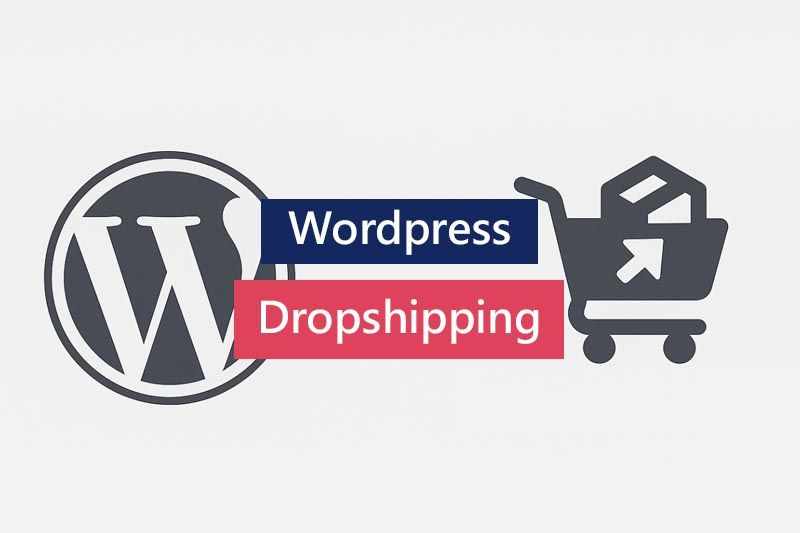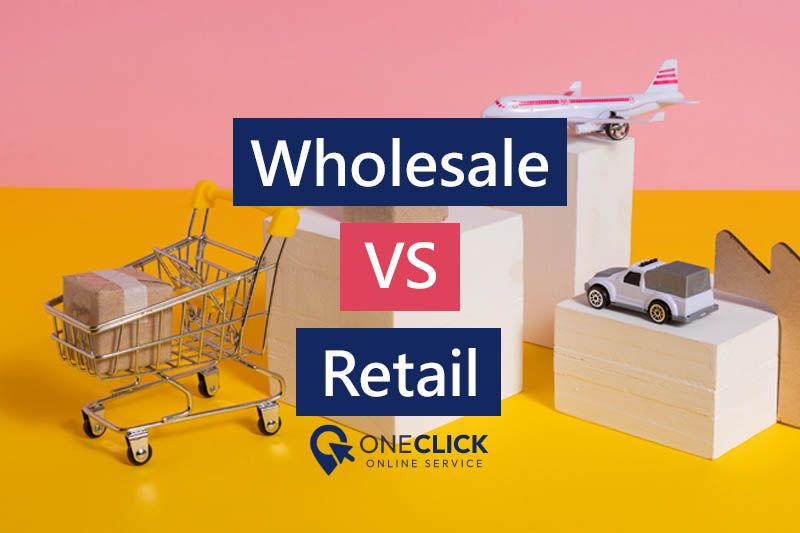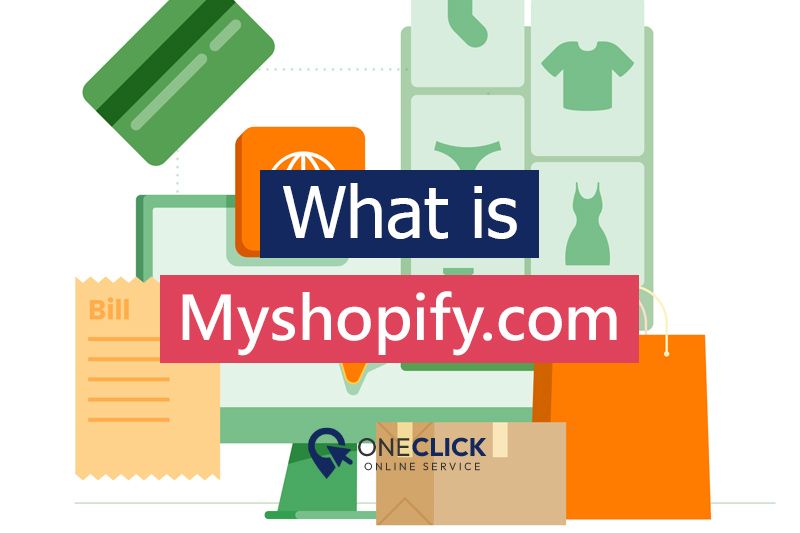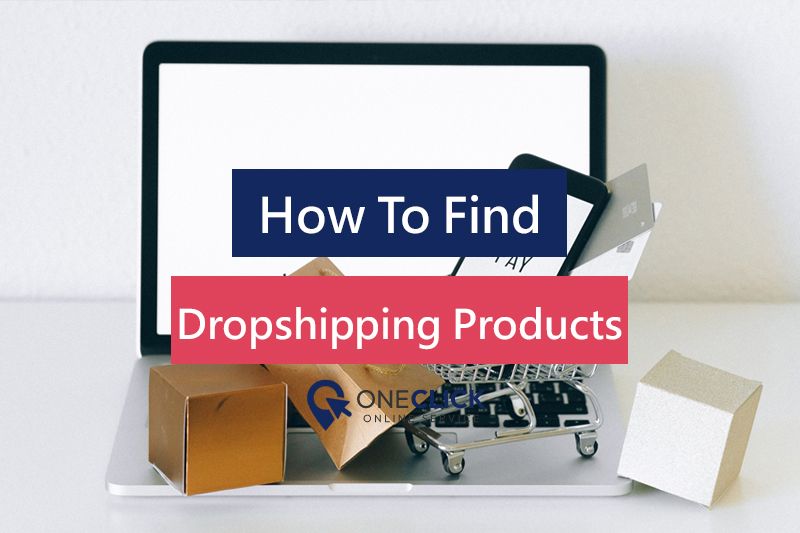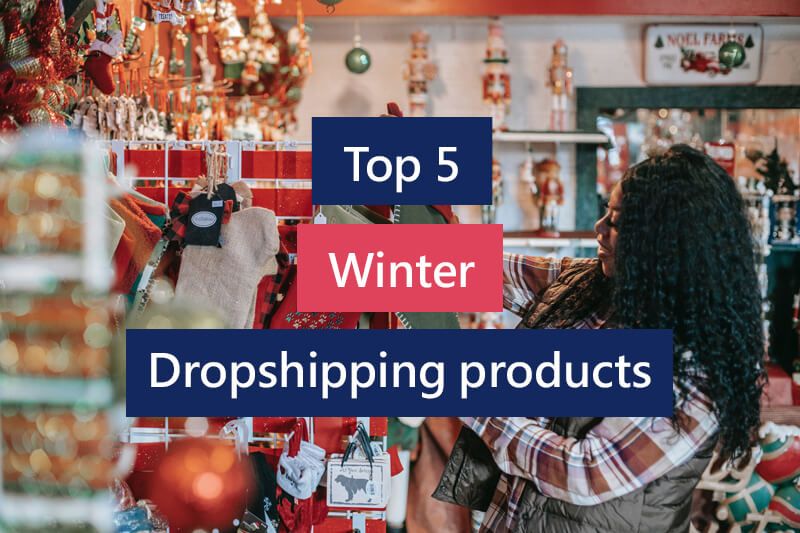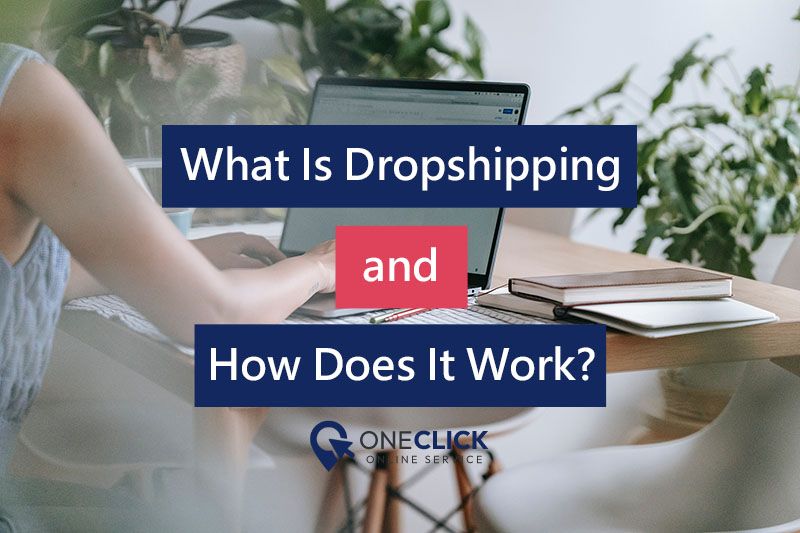13 Types Of Dropshipping Ads To Boost Traffic & Sales 2025
Table of contents
- 13 Ways To Advertise Your Dropshipping Store
- Paid Dropshipping Ad Methods
- Free Dropshipping Promotion Methods
- Important Information To Include In Dropshipping Ads
- Factors To Consider When Creating Dropshipping Ads
- What To Avoid When Running Dropshipping Ads
- Step Up Your Dropshipping Game With Oneclick Automation
- FAQ About Dropshipping Ads
Dropshipping ads are the lifeblood of a successful eCommerce business. Without the right ad strategy, even the best product can go unnoticed. This blog is your go-to resource for mastering ad tactics that drive clicks, conversions, and consistent revenue. Whether you're new or scaling up, we’ve got the insights you need.
13 Ways To Advertise Your Dropshipping Store
When it comes to dropshipping, choosing the right advertising platform can make or break your store’s success. Each channel offers unique advantages, targeting capabilities, and user behaviors that align differently depending on your niche and audience.
If you want to generate traffic and sales, you need to promote your store—period. Whether you go with paid ads or organic methods, smart advertising is how you stay ahead of the competition.
Below are some of the most effective advertising platforms for dropshipping businesses:
Paid Dropshipping Ad Methods
Paid advertising is all about data, speed, and ROI. Most dropshippers rely heavily on PPC (pay-per-click) campaigns to drive targeted traffic. Platforms like Facebook and Google let you optimize for conversions, track your cost per acquisition (CPA), and scale winners. The challenge? Testing creatives, finding the right audience, and avoiding ad fatigue. Budget control is also key—you can burn money fast if you’re not tracking performance daily. Retargeting, lookalike audiences, and custom events make paid ads powerful when set up properly. But they require constant tweaking to stay profitable. These are the go-to paid ad channels:
- Facebook Ads
- YouTube Ads
- Google Ads
- Instagram Advertising
- TikTok Ads
- Pinterest Advertising
- Snapchat Ads
- Twitter Ads
- Influencer Marketing
1. Facebook Ads
 Facebook has become a go-to platform for dropshippers, and it's easy to see why. With over 3 billion monthly active users, it offers a massive and diverse audience. The platform's targeting capabilities are incredibly advanced—allowing advertisers to reach users based on demographics, interests, behaviors, occupations, locations, and even specific Facebook activity. This precision makes it easier than ever to get your product in front of the people who are most likely to buy.
Facebook has become a go-to platform for dropshippers, and it's easy to see why. With over 3 billion monthly active users, it offers a massive and diverse audience. The platform's targeting capabilities are incredibly advanced—allowing advertisers to reach users based on demographics, interests, behaviors, occupations, locations, and even specific Facebook activity. This precision makes it easier than ever to get your product in front of the people who are most likely to buy.
Setting up a campaign is straightforward through Facebook Ads Manager. After creating a Facebook page and account, you’ll define your campaign objective, set your budget, and choose your audience. From there, you can create and upload various types of ads, including image, video, and carousel formats. Once live, the platform gives you detailed performance metrics like click-through rates (CTR), conversions, and more—helping you stay in control of your ad spend and results.
What really sets Facebook apart is its cost-efficiency. With an average CPC of around $0.97, it's a relatively affordable way to drive targeted traffic to your store. Dropshippers can use this platform to build brand awareness, generate leads, or push direct sales. And thanks to Facebook's real-time analytics, you're able to quickly spot what’s working and what’s not.
To get the best results, it's essential to A/B test multiple versions of your ads. This means running different creatives, headlines, or calls to action to see what resonates most with your audience. Testing allows you to scale the best-performing ads while cutting what doesn’t convert—maximizing ROI in the process. With a strategic approach, Facebook Ads can become one of the most powerful tools in your dropshipping arsenal.
2. YouTube Ads
 YouTube Ads offer a powerful and dynamic way for dropshipping businesses to connect with potential customers through video content. With over 2.6 billion active users watching more than a billion hours of video every month, YouTube provides an unmatched opportunity to promote products at scale. This massive reach allows dropshippers to place their brand in front of a highly engaged global audience.
YouTube Ads offer a powerful and dynamic way for dropshipping businesses to connect with potential customers through video content. With over 2.6 billion active users watching more than a billion hours of video every month, YouTube provides an unmatched opportunity to promote products at scale. This massive reach allows dropshippers to place their brand in front of a highly engaged global audience.
The strength of YouTube advertising lies not just in its scale, but in how it engages viewers. Video content is proven to be more memorable and impactful compared to traditional ad formats, making it an ideal medium for product demonstrations, brand storytelling, and emotional connection. Dropshipping brands can leverage this to show their products in action, helping viewers visualize how the product fits into their lives — and ultimately driving conversions.
Setting up YouTube Ads is made seamless through Google Ads, where advertisers can select from a variety of formats including Skippable In-Stream Ads, Non-Skippable In-Stream Ads, Bumper Ads, Video Discovery Ads, Display Ads, Overlay Ads, and Sponsored Card Ads. This flexibility enables businesses to tailor their campaigns to fit specific goals, whether that's brand awareness, engagement, or direct sales.
Another key advantage is YouTube's precise targeting capabilities. Dropshippers can define their ideal customer by targeting specific demographics, interests, and user behaviors. This granular approach ensures that ads are only shown to viewers most likely to be interested in similar products or topics, maximizing ad spend and return on investment.
YouTube Ads also offer measurable results. Campaign performance can be tracked in real-time, allowing businesses to analyze engagement, refine their approach, and continuously improve results. From setting clear targeting parameters to testing ad creatives, the platform supports a data-driven strategy for scaling dropshipping businesses effectively.
For brands targeting younger audiences, or those looking to increase visibility through engaging and informative video content, YouTube remains one of the most effective platforms to generate traffic and boost sales.
3. Google Ads
 Google is the most widely used platform on the internet, making it an incredibly powerful tool for reaching a vast number of potential customers. For dropshipping businesses, this means an opportunity to place products in front of users who are already actively searching for them. Google Ads plays a central role in this strategy by allowing businesses to appear right when a customer’s intent is at its peak.
Google is the most widely used platform on the internet, making it an incredibly powerful tool for reaching a vast number of potential customers. For dropshipping businesses, this means an opportunity to place products in front of users who are already actively searching for them. Google Ads plays a central role in this strategy by allowing businesses to appear right when a customer’s intent is at its peak.
Google Ads operates on a pay-per-click (PPC) model, where advertisers bid on specific keywords related to their products. When someone searches using those keywords, the ad may appear in the search results or across the Google Display Network. This makes Google Ads particularly effective for dropshipping, as it targets users based on active search behavior, which translates into higher chances of conversion.
One of the standout features for dropshippers is Google Shopping Ads, which display product images, prices, titles, and reviews directly within search results. This visual presentation helps capture attention and makes it easier for customers to compare and make purchasing decisions quickly. Whether someone is searching for sunglasses, shoes, or tech gadgets, a well-optimized Google Shopping Ad ensures your product is front and center.
Keyword optimization is at the core of a successful campaign. When the keywords you set match a user’s search term, your ad is triggered. This underscores the importance of choosing high-volume, relevant keywords that reflect strong buyer intent. It also emphasizes the need for ongoing keyword research and testing to improve visibility and return on investment.
Beyond keyword targeting, Google Ads offers advanced customization options based on user demographics, interests, past behavior, and geographic location. This allows you to fine-tune your messaging and target audience with incredible precision. Whether you want to attract new customers, retarget past visitors, or build brand awareness, Google Ads gives you the tools to do it all.
Furthermore, the variety of ad types—such as Search, Shopping, Display, Branded, Product, and Remarketing campaigns—allows dropshippers to address different stages of the customer journey. These options, combined with in-depth performance tracking, provide actionable insights for continuous optimization. In short, Google Ads empowers dropshipping businesses to scale efficiently while staying laser-focused on ROI.
4. Instagram Advertising
Instagram advertising is a powerful tool for dropshipping businesses to visually showcase their products and connect with a highly engaged audience. With its range of ad formats—such as photo ads, video ads, reels, carousel posts, and Instagram Stories—brands can craft compelling content that blends seamlessly into users’ feeds. Whether you're promoting a new product or sharing behind-the-scenes content, Instagram provides the creative flexibility to match your brand’s voice and style.
One of the most impactful strategies on Instagram is influencer shoutouts. These work similarly to influencer marketing, where popular users promote your product on their own accounts. As influencers often have highly engaged, niche-specific audiences, their endorsement adds a layer of social proof that drives trust and encourages purchases. This trend has grown rapidly, especially among younger demographics, and has proven to be a strong tactic for increasing visibility and brand awareness.
Using Instagram Ads Manager, businesses can target specific audiences based on demographics, interests, behaviors, and more—thanks to Instagram’s integration with Facebook’s advanced targeting system. Ads can be created from scratch or by boosting existing posts, making it easy to scale efforts based on your budget. With cost-effective options and flexible budgeting, brands can start small and optimize as they grow.
Overall, Instagram is an ideal platform for e-commerce brands looking to connect with Gen Z and millennials, drive product discovery, and convert views into sales with strong calls-to-action and engaging visuals.
5. TikTok Ads
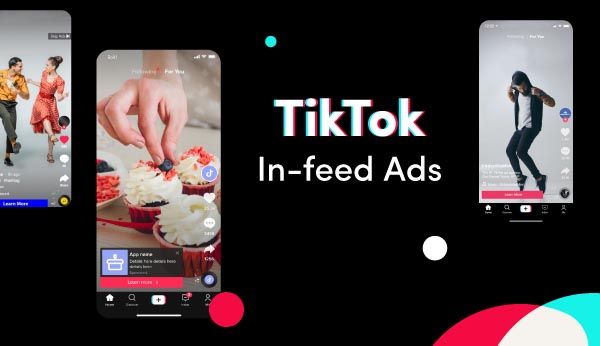 TikTok marketing may be relatively new, but it has already proven to be a powerful platform for e-commerce and dropshipping businesses. With its explosive growth and a user base dominated by Gen Z and millennials, TikTok presents a unique opportunity to reach and engage a younger, trend-driven audience. Its viral nature and creative content format make it an ideal channel for building brand awareness and driving conversions through compelling video content.
TikTok marketing may be relatively new, but it has already proven to be a powerful platform for e-commerce and dropshipping businesses. With its explosive growth and a user base dominated by Gen Z and millennials, TikTok presents a unique opportunity to reach and engage a younger, trend-driven audience. Its viral nature and creative content format make it an ideal channel for building brand awareness and driving conversions through compelling video content.
Setting up TikTok Ads is similar to platforms like Facebook, offering a familiar interface through TikTok Ads Manager. Here, advertisers can define their campaign objectives, such as conversions, website traffic, app installs, or reach, and tailor the ad strategy accordingly. What sets TikTok apart, however, is its content-first culture—brands must focus on entertainment, authenticity, and relevance to succeed.
TikTok offers several ad formats designed to integrate seamlessly into the user experience. These include In-Feed Ads, TopView (full-screen ads shown when the app opens), Branded Hashtag Challenges, Brand Takeovers, Spark Ads (which use existing organic posts), and Branded Effects. Each format provides a different way to capture attention, promote interaction, and drive users toward a desired action.
However, it's important to understand the platform’s demographic. Products that don't align with TikTok's predominantly younger audience may struggle to gain traction, leading to wasted ad spend. That’s why selecting the right product, aligning it with trends, and using a relatable tone are crucial steps in running a successful TikTok campaign.
TikTok’s algorithm favors content that resonates with users, meaning that ads that feel native to the platform—creative, fun, and engaging—can outperform traditional promotional content. The platform also enables detailed audience targeting based on interests, behaviors, and demographics, allowing dropshipping brands to refine their messaging and optimize results.
Ultimately, TikTok is an incredible platform for dropshippers who are willing to embrace creativity, engage with trends, and connect with users through authentic video content. When executed correctly, TikTok Ads can significantly boost brand visibility, engagement, and conversions in a way few other platforms can.
6. Pinterest Advertising
Pinterest advertising offers a unique and powerful avenue for dropshipping businesses to reach customers who are actively looking for inspiration and ready to shop. Known for its visually driven format and discovery-focused user base, Pinterest is particularly well-suited for promoting aesthetically pleasing and lifestyle-oriented products in niches like home decor, fashion, DIY, and cooking.
The platform allows advertisers to create engaging ads directly through the Pinterest Ads Manager, including formats like Promoted Pins, Video Pins, and Shopping Ads. These ads appear in users’ home feeds, search results, and category pages, blending in seamlessly with organic content. Because users often browse Pinterest with specific ideas in mind, ads that match their interests can feel more like helpful recommendations than traditional promotions—prompting higher engagement and click-through rates.
Promoted Pins, the most common ad format, function similarly to other PPC ads. Advertisers only pay when users engage with the content, making it a cost-effective option with a notable return on investment—often generating around $2 for every $1 spent. Plus, ads can even be created on the go by turning organic Pins into paid promotions right from a mobile device.
Pinterest’s targeting capabilities are another major advantage. Businesses can tailor their audience based on demographics, location, interests, search keywords, and even customer lists. This allows for highly refined campaigns that reach people most likely to engage with and purchase from your store. Additionally, understanding Pinterest’s primary demographic is key—approximately 75% of its users are women. So, aligning ad content with women-centric products and visual aesthetics can significantly enhance campaign success.
With 80% of weekly users discovering new brands or products on the platform, Pinterest serves as a fertile ground for e-commerce brands to build awareness and drive traffic. For dropshipping businesses offering visually appealing products and looking to target an audience with strong buying intent, Pinterest Ads provide a compelling and high-ROI marketing option.
7. Snapchat Ads
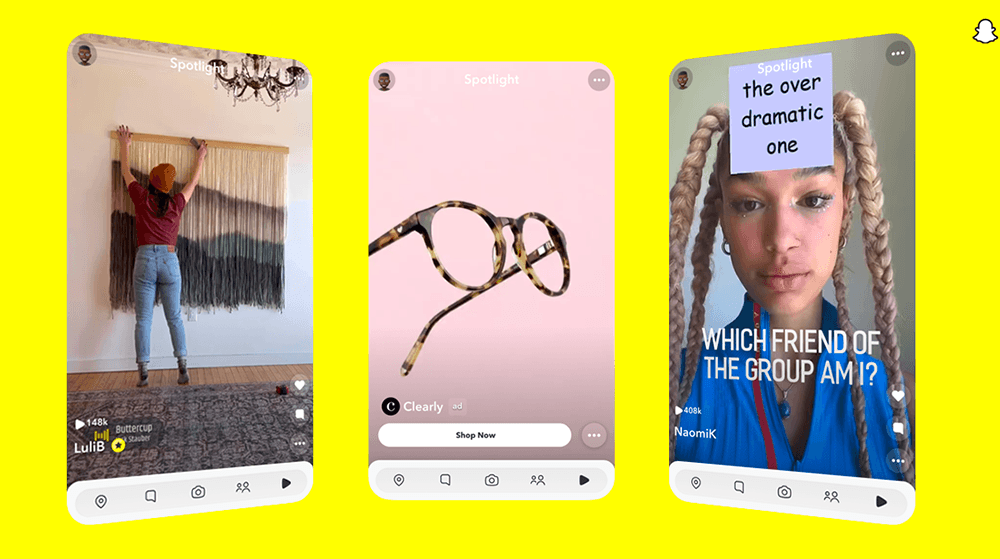 Snapchat advertising offers a compelling opportunity for dropshipping businesses to reach a young, highly engaged audience through immersive, full-screen video content. With over 422 million daily active users—primarily Gen Z and millennials—Snapchat provides a vast platform for visually driven product promotions that feel native to the user experience.
Snapchat advertising offers a compelling opportunity for dropshipping businesses to reach a young, highly engaged audience through immersive, full-screen video content. With over 422 million daily active users—primarily Gen Z and millennials—Snapchat provides a vast platform for visually driven product promotions that feel native to the user experience.
Snapchat Ads come in a variety of formats, including Snap Ads (vertical full-screen videos up to 10 seconds), Story Ads (a sequence of Snaps users can tap through), and Collection Ads (showcasing multiple products with swipe-up functionality). These ads appear between user-generated stories and in the Discover section, making them part of a user’s natural browsing flow. This placement gives advertisers a unique opportunity to capture attention in a non-disruptive way—if the content is compelling enough.
The platform's low daily minimum ad spend of just $5 makes it especially attractive for dropshipping businesses testing new products or audiences. With such flexibility, advertisers can easily test creatives, refine targeting, and optimize campaigns based on performance without overspending. This ability to learn and adjust quickly is essential to building profitable ad campaigns.
Snapchat’s targeting capabilities allow advertisers to reach users based on detailed demographics, interests, behaviors, and even device types. Dropshippers can link their ads directly to product pages, enabling a seamless shopping experience for users who are ready to act. And thanks to the swipe-up feature, engagement with ads can lead to instant conversions.
It's crucial to align product offerings with Snapchat’s youthful audience. Ads should feature trendy, visually striking products and deliver a message that resonates with the lifestyles and interests of users aged 13 to 24. This is the sweet spot where Snapchat advertising thrives.
Overall, Snapchat is a valuable channel for dropshippers looking to make an impact through short, creative video content. It blends affordability, high engagement, and advanced targeting into a platform tailor-made for building brand awareness and driving sales among younger shoppers.
8. Twitter Ads
X Ads (formerly Twitter Ads) provide a dynamic and versatile platform for dropshipping businesses to connect with a wide audience in real time. With over 368 million monthly active users, X is an ideal environment for promoting trending products, engaging in active conversations, and increasing brand visibility—especially among a younger, tech-savvy demographic.
Advertisers can create campaigns through the X Ads Manager, choosing from various campaign objectives such as awareness, consideration, or conversions. Depending on these goals, brands can run different ad types including Promoted Tweets, Promoted Accounts, Video Ads, Display Ads, Mobile Ads, and even native ads. These formats allow you to either drive traffic directly to your dropshipping store or grow a loyal follower base before initiating sales-focused campaigns.
One standout feature of X Ads is its performance-based billing structure. Advertisers are only charged when users take actions that align with the set campaign objective—whether that’s a website visit, a follow, or a product click. This ensures more efficient ad spend and better ROI for dropshippers.
The platform also offers advanced targeting options to help refine and optimize your reach. You can target users based on demographics, interests, keywords, specific conversations, and even by followers of certain accounts. Additionally, event targeting lets advertisers tap into real-time discussions and trending topics, making it easier to reach users who are actively engaged with relevant themes.
Another powerful tool is Twitter Shops, which allows brands to display their products directly on their profiles. This feature enables a smoother shopping experience by letting users browse and click through to product pages without ever leaving the app.
X’s fast-paced and conversational nature makes it ideal for promoting limited-time offers, new product launches, and participating in viral moments. For dropshipping businesses looking to build momentum and engage with users in real time, X Ads offer the perfect blend of reach, flexibility, and precision targeting.
9. Influencer Marketing
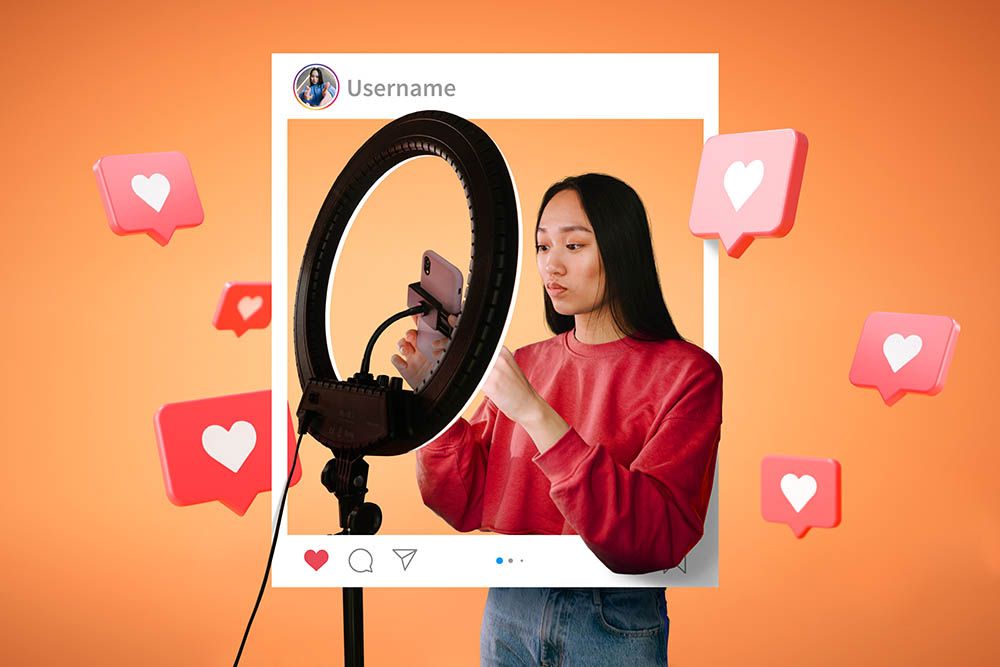 Influencer marketing has become one of the most effective tools for dropshipping businesses looking to build trust, increase visibility, and drive sales. It involves partnering with individuals who have established credibility and a loyal following in specific niches. These influencers—whether macro, micro, or nano—hold sway over their audiences due to their expertise, authenticity, and consistent engagement, making them powerful allies for any eCommerce brand.
Influencer marketing has become one of the most effective tools for dropshipping businesses looking to build trust, increase visibility, and drive sales. It involves partnering with individuals who have established credibility and a loyal following in specific niches. These influencers—whether macro, micro, or nano—hold sway over their audiences due to their expertise, authenticity, and consistent engagement, making them powerful allies for any eCommerce brand.
By collaborating with influencers whose values align with your brand and whose followers match your target demographic, you can reach a highly engaged audience that already has an interest in your product category. These partnerships can take many forms, including sponsored posts, product reviews, giveaways, unboxings, or even affiliate promotions with trackable discount codes. This diversity in approach allows brands to tailor their strategy based on campaign goals—whether it's driving awareness, building credibility, or boosting direct conversions.
What makes influencer marketing particularly valuable for dropshipping is its reliance on social proof. Consumers tend to trust recommendations from people they follow far more than they do traditional advertising. Influencers create authentic, relatable content that doesn’t feel like a hard sell, which naturally resonates with their audience and encourages interaction. This authenticity helps drive not just attention but also action.
Finding the right influencers can be done directly through platforms like Instagram, YouTube, or TikTok, or via specialized influencer marketing platforms that simplify the discovery and outreach process. These platforms can filter influencers based on engagement rates, niche relevance, follower count, and location—helping you identify the best partners for your brand.
Ultimately, influencer marketing is a goldmine for dropshipping brands seeking high ROI with low upfront investment. By tapping into an influencer’s existing trust and community, brands can launch new products, penetrate niche markets, and build brand awareness far more effectively than with many traditional advertising methods.
Free Dropshipping Promotion Methods
Free methods won’t get you thousands of orders overnight, but they help build long-term trust and engagement. Think content marketing and community-building. Posting daily on socials, writing blog content, or being active in Facebook groups all take time—but they’re budget-friendly and sustainable. SEO plays a role too, especially if you build a blog with valuable info. Email marketing is another underrated tactic for abandoned carts, promos, and follow-ups. The main advantage? You’re not paying for every click. But consistency is what drives results with free traffic. These are some of the top free methods to promote your store:
- Social Media Posts
- Blog Articles
- Facebook Groups
- Email Marketing
10. Social Media Posts
Organic social media posting is a powerful and cost-effective way for dropshipping businesses to build brand presence, foster community engagement, and attract new customers. Unlike paid ads that are pushed directly to a targeted audience, these posts appear on your profile and are visible to your existing followers—and potentially to a wider audience through algorithm-driven discovery.
Platforms like Instagram, Facebook, TikTok, YouTube, and Snapchat offer endless opportunities to showcase your products creatively. Whether it’s eye-catching image posts, short-form videos, engaging reels, behind-the-scenes stories, or unboxing clips, every type of content gives you a chance to highlight your brand’s personality and connect with your audience on a deeper level.
The real power of social media posts lies in their potential to go viral. A single reel, video, or creative photo with the right hook and hashtags can explode in reach, landing on explore pages or trending feeds and putting your product in front of thousands—or even millions—of users. Hashtags play a key role here, helping your content surface in relevant searches and increasing your discoverability.
To maximize engagement and visibility, your posts should be optimized with trending audio, effects, and formats that resonate with your target audience. User-generated content is also a valuable tool—by sharing photos and videos from real customers, you build social proof and deepen trust. Creative tactics like launching a branded challenge or using platform-specific trends can also drive organic traffic and spark viral sharing.
In essence, social media posts are more than just updates—they’re opportunities to tell your brand story, build relationships with your audience, and generate conversions without spending a dime. With consistency, creativity, and a finger on the pulse of trends, your organic content can deliver significant growth and long-term brand loyalty.
11. Blog Articles
Blogging is one of the most effective ways to drive organic traffic to your dropshipping store. Especially on platforms like Shopify and Wix, having a blog lets you take full advantage of SEO by targeting keywords your potential customers are already searching for. When done right, your content can show up in search results, bringing in a steady stream of visitors without spending a dime on ads.
Beyond traffic, a blog helps you build trust and authority. By sharing helpful, engaging content—like product tips, buying guides, or trend insights—you offer real value before someone even makes a purchase. This not only sparks interest in your brand but also keeps readers on your site longer, increasing the chances they'll click through to your product pages and buy. It’s a simple yet powerful way to guide people from discovery to conversion.
Learn about How to Dropship on Shopify
12. Facebook Groups
Using Facebook Groups is a smart way to generate highly targeted organic traffic for your dropshipping business. By joining or creating groups that align with your niche—such as a group for teachers if you're selling school supplies—you’re placing your products in front of people who already have a genuine interest. This built-in demand can lead to more engagement, trust, and ultimately, higher conversion rates.
You can share product photos, videos, or even helpful blog content directly within these communities to spark interest and drive traffic back to your store. These posts feel more personal and less like ads, which makes group members more likely to interact. Plus, by being active and adding value to the group, you’re not just promoting—you’re building a brand presence that people recognize and trust. Over time, this strategy can boost both your sales and your reputation within your niche.
13. Email Marketing
 Email marketing is one of the most effective and affordable tools for promoting your dropshipping brand. By collecting customer email addresses—through sign-ups, discount offers, or post-purchase communication—you create a direct line to an audience already interested in your products. This means you don’t have to spend extra to reach them again. Instead, you can engage with your subscribers through personalized offers, product updates, and exclusive promotions that drive repeat sales.
Email marketing is one of the most effective and affordable tools for promoting your dropshipping brand. By collecting customer email addresses—through sign-ups, discount offers, or post-purchase communication—you create a direct line to an audience already interested in your products. This means you don’t have to spend extra to reach them again. Instead, you can engage with your subscribers through personalized offers, product updates, and exclusive promotions that drive repeat sales.
To build your email list, it’s essential to offer value in return. This could be a special discount for new subscribers, early access to sales, or free resources related to your niche. Once someone subscribes or completes a purchase, you can nurture that relationship with well-timed emails that guide them back to your store. Whether you’re announcing a new product or running a flash sale, email marketing helps you stay top-of-mind and build customer loyalty—making it a must-have strategy for growing your dropshipping business.
Important Information To Include In Dropshipping Ads
To run high-performing dropshipping ads, it’s crucial to include the right elements that capture attention and convert interest into sales. At Oneclick Dropshipping, we believe that effective ads are not only visually appealing but also informative, persuasive, and action-driven.
Start with a compelling product description that highlights what makes the item special. Include clear, concise text alongside eye-catching visuals and short demonstration videos. This helps potential buyers fully understand the product and its benefits at a glance. Next, add urgency and incentives—mention limited-time discounts, free shipping, or bundle deals to push quick decision-making.
To boost visibility, incorporate relevant keywords in your ad title and description. A well-placed, strong call-to-action (CTA) button like “Shop Now” or “Claim Your Discount” is key to converting viewers. Paired with high-quality images or videos, these components make your ads both attractive and effective.
Factors To Consider When Creating Dropshipping Ads
Creating ads that convert isn't just about flashy visuals—it’s about strategic planning. Here are the essential factors to consider:
Business Goals
Before designing any ad, define your core objective. Are you trying to drive traffic, increase conversions, grow brand awareness, or promote a new product? The goal shapes the message, format, and call-to-action of the ad. For example, a traffic-focused campaign may prioritize curiosity and clicks, while a conversion-focused ad emphasizes value and urgency.
Target Audience
An ad only works if it speaks to the right people. Tailor your ad content and targeting to the specific audience segment that’s most likely to convert. Selling women’s fashion? Your visuals, tone, and placement should all reflect that. The more aligned your content is with your audience’s interests and behaviors, the better your results.
Selling Channel Rules
Every ad platform has its own policies—ignore them, and you risk getting your campaign flagged or removed. For example, Facebook prohibits “before and after” transformation images. Always review the platform’s ad guidelines to ensure compliance, especially when dealing with copyrighted content or sensitive visuals. Understanding these rules upfront saves you time and protects your ad spend.
Ad Budget
Your budget influences everything—from the platform you choose to the quality of your creative assets. Whether you’re allocating $5/day on Snapchat or investing more on YouTube, define your budget early and plan accordingly. Consider if you’ll need external help like graphic designers, video editors, or ad copywriters. Knowing your budget helps you maximize ROI and avoid unexpected costs.
A/B Testing
Even the most well-crafted ad can fall flat if it doesn't resonate. A/B testing lets you experiment with different versions of your ad—varying headlines, creatives, CTAs, or formats—to identify which performs best. Once you’ve collected enough data, double down on the version that delivers the highest engagement or conversion rate. It’s one of the smartest ways to refine your strategy and improve campaign performance over time.
Demand of the Market
No matter how slick your ad is, if there’s no demand for the product, it won’t sell. Ensure your offering solves a problem, fills a gap, or taps into a trending interest. Then, use your ad to tell a story that connects with your audience emotionally. Highlight how your product meets their needs or simplifies their life. A strong opening hook and a clear CTA can guide them from interest to action.
What To Avoid When Running Dropshipping Ads
While creating ads for your dropshipping business, it’s just as important to know what to avoid as it is to know what works. Avoiding these common pitfalls will save your ad budget, improve customer perception, and increase your chances of success.
1- Before/After Pictures
Avoid using before-and-after images, especially on platforms like Facebook, where they’re prohibited due to being considered misleading. Violating these rules can lead to your ads being rejected or your account being penalized. Focus instead on creative, honest visuals that highlight product benefits effectively.
2- Poor Quality Images/Videos
Low-quality visuals can instantly reduce trust and engagement. Make sure your ads feature clear, attractive images and videos. If creating high-quality content isn’t your strength, consider hiring a freelancer on platforms like Fiverr to handle your visuals professionally within your budget.
3- Forceful Language
Avoid aggressive or pushy language that pressures users to buy. Instead, focus on persuasive copywriting that highlights the value and benefits of your product. Let the content speak for itself and guide customers to make informed decisions.
3- Too Much Text
Ad content should be clean and concise. Stick to platform guidelines and recommended character limits to avoid overwhelming users. Keep your message short, clear, and value-driven to capture attention quickly.
4- Over-Advertising
Posting too many ads or constantly pushing content can turn potential customers away and waste your ad spend. Focus on testing and optimizing your top-performing ads rather than running too many at once. Quality always beats quantity.
Avoiding these common missteps can make a big difference in your campaign results. For more insights, check out our guide on 15 Common Dropshipping Mistakes - it’s a helpful resource if you’re looking to fine-tune your marketing and overall dropshipping strategy.
Here’s the final section with your requested title and link integrated:
Step Up Your Dropshipping Game With Oneclick Automation
Ready to streamline your dropshipping operations and boost your efficiency? With Oneclick Dropshipping, automation is at the heart of scaling smarter, not harder. Our platform offers powerful tools that handle the heavy lifting so you can focus on growth.
From automated product imports and inventory syncing to real-time order tracking and one-click fulfillment, our features are designed to save time and reduce errors. You can also manage price updates, track supplier changes, and push products to your store with ease—all from a single dashboard.
Take control of your business and stay ahead of the competition by using the Oneclick Dropshipping Automation Platform. It’s your all-in-one solution to simplify, automate, and scale your dropshipping store with confidence.
FAQ About Dropshipping Ads
Which Ads Are Best For Dropshipping?
Facebook and Google Ads are among the most effective paid options for promoting your dropshipping store due to their powerful targeting features. That said, organic methods like social media content and blogging also play a key role in building traffic and brand awareness over time.
Do I Need To Advertise My Dropshipping Business?
Absolutely. Advertising helps you get your products in front of the right people. Whether you're aiming to drive traffic, boost sales, or build your brand, ads allow you to reach a targeted audience and scale your business faster.
How Much Does It Cost To Run Dropshipping Ads?
Ad costs vary by platform and targeting. Most platforms let you set your own daily or campaign budget. On average, you might spend anywhere from $0.38 to $5.26 per click depending on your niche, audience, and ad quality. Start small, test, and scale what works.



